The Strike Gold had always been a bit of an enigma for me, not so much because there’s anything inherently mysterious about them, but more so because they kind of sat on the periphery of my denim imagination, their company being small enough to quietly slip under the radar while steadily producing some of the most unique and well-thought-out jeans on the planet. Like a half-remembered dream upon waking, I’ve always ‘kind of’ known about them and their products, but never ‘really’ known what they are all about. You’d see the odd incredible pair pop on Instagram or Reddit every so often, but generally speaking, they aren’t that common in the wild compared to some of the bigger name Japanese brands. Only one thing to be done then: walk into headquarters and start chatting.
The main shop is called Klax-On and is located at one end of Jeans Street in Kojima, two doors down from its sister shop, Tenryo Denim. Upon entering, I am met with two walls of beautifully-crafted jeans, and two of the nicest people in the industry. Tohru Hamamoto and his wife are the heart of the company, and work together in the main shop. Hamamoto-san is friendly and down-to-earth, and before we know it, we are laughing our way deep into the world of denim. I hope you will enjoy our conversation.
Firstly, what’s the difference between Tenryo Denim and The Strike Gold?
If you think of it like a triangle shape, The Strike Gold is kind of our flagship sitting at the top with Tenryo Denim underneath that. I think the concept we have for The Strike Gold is that this is the place for our stuff that doesn’t really change that much. Like our core, standard items, things we’ve been making for a long time and want to keep making in more-or-less the same way. It’s the place we can keep on with the authentic and traditional production methods. Tenryo Denim is kind of the opposite in that it’s where we like to experiment and try new things, like new materials or new production techniques. It’s not so tied to history or tradition as The Strike Gold. So even though a lot people might think they are the same, Tenryo Denim and The Strike Gold are actually quite different.
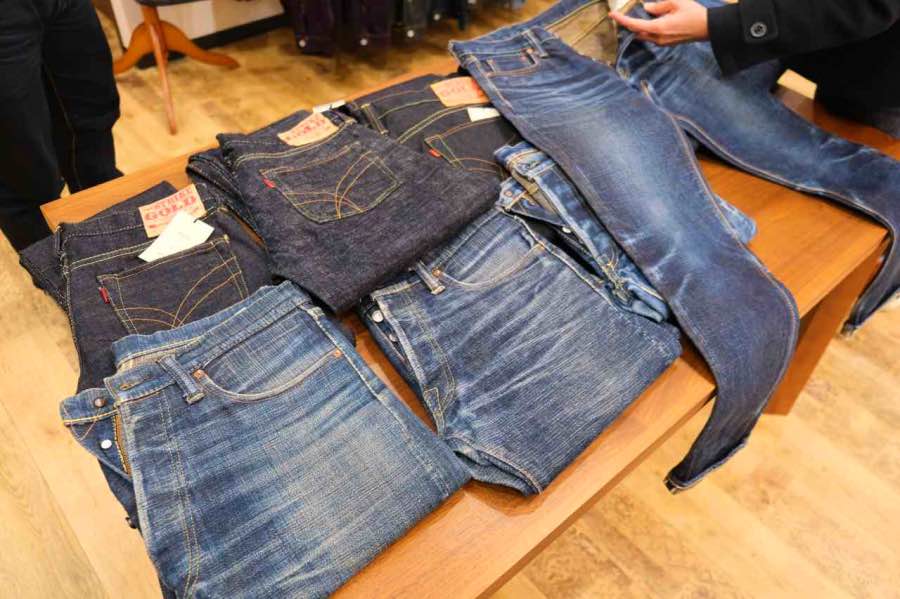
Ah, I see…that makes sense.
I figure for today’s talk and for your audience, it would probably be The Strike Gold that you’d be more interested in.
Sounds good. So you actually have two physical stores, right?
Yes, this is The Strike Gold and then Tenryo Denim is just a few doors down. You probably walked right by it on your way here.
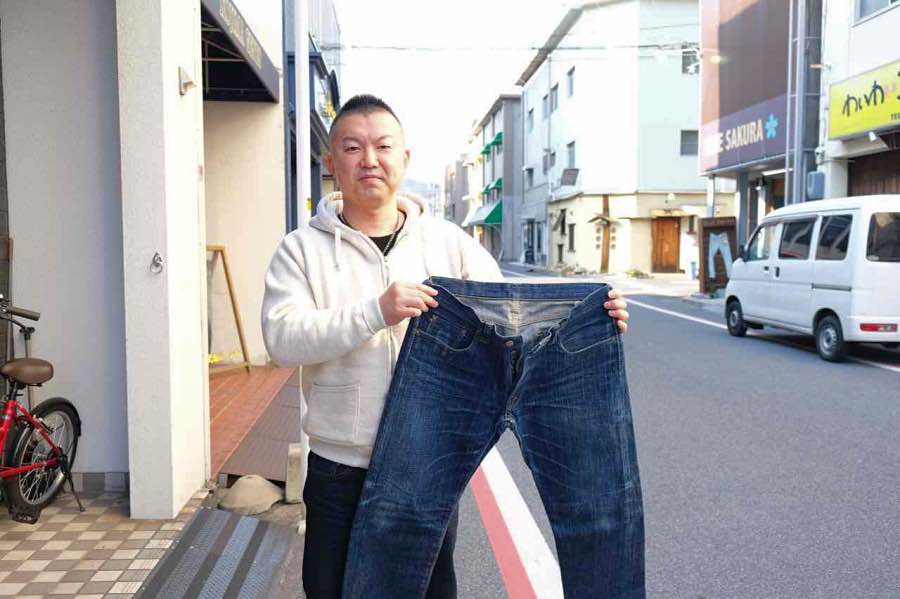
We did actually. Are you usually here at The Strike Gold then?
Pretty much, yes. This is kind of my office too where we do all planning, orders, etc. so I’m normally here. Of course I sometimes head over to Tenryo Denim too.
So how did you ever get into all of this? How did you find yourself as a jeans maker?
Hmm…it’s a bit of long story, maybe longer than you’re expecting…(laughs)
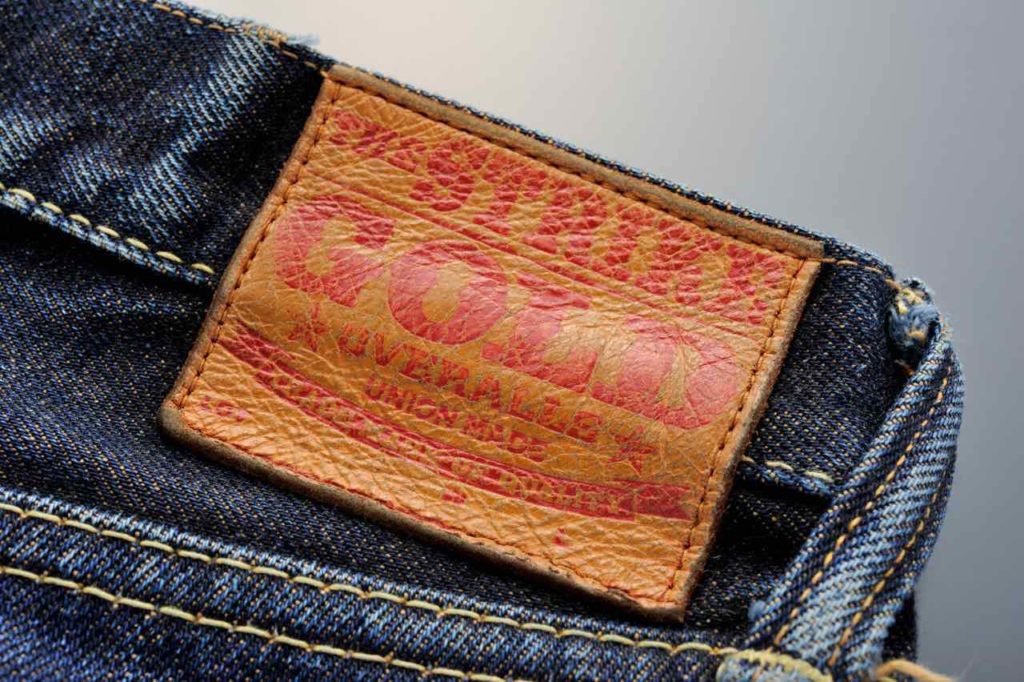
No, I’m good. Bring it on!
I was actually born here in Kojima. My parents sewed clothing and also did finishing ironing, which is like the final step where finished garments are pressed before shipping or sale. I grew up right in the middle of all that, surrounded by the sound of sewing machines and piles of clothing. So you’d think then that I’d naturally be destined for the industry, but actually it was more like I was exposed to the harsh realities of the industry here, the crazy ups and downs of the business. Kojima is pretty much all about making clothes, so as I was growing up I was actually told to go and do something else. So instead of the romantic story of following your parents, the indications growing up were that it was something I’d be better off avoiding.
Ah wow, almost like an opposite effect. Like “Go and make your life elsewhere…”
Exactly. But growing up like that, I fell in love with clothes, and in 2002, when I turned 30, I went against what was supposed to be better outside judgement, and opened my own store called Klax-On.
Which is where we are now.
Physically yes, but at that time it was just what we call a “select shop” in Japan, which is where you just collect and sell all the clothes that you like. So I wasn’t actually making anything yet, just selling other brands that I really liked. So that was 2002. For the first five years, until 2007, I didn’t actually make anything myself. You can still see a few vestiges of that as we do still sell some Sugar Cane flannels alongside our own.
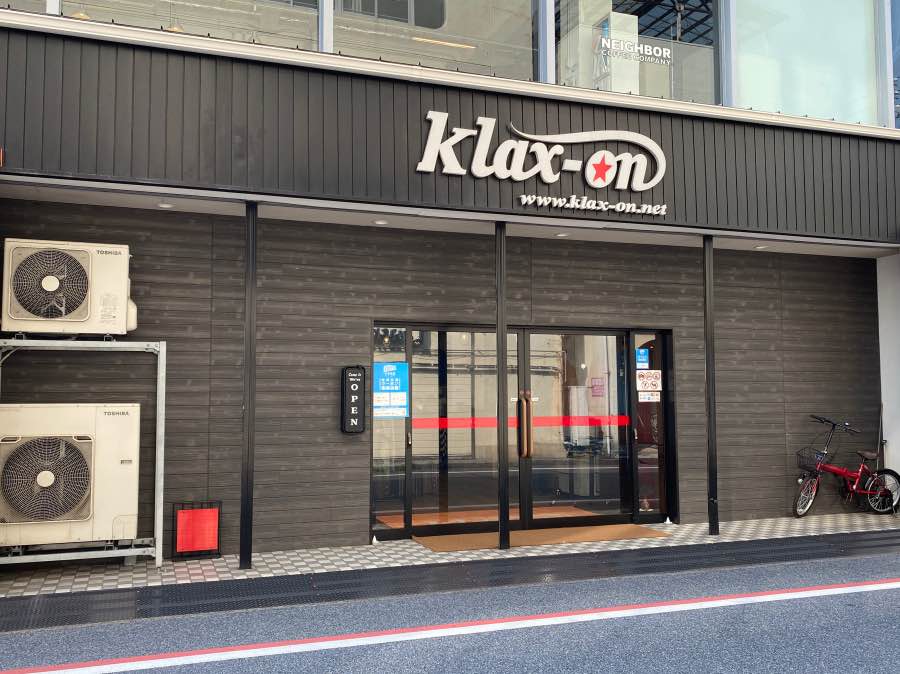
I see.
But you know, I couldn’t keep the sound of those old machines and the memories of watching clothes actually being created at bay forever. I really wanted to create things.
I hoped this part was coming.
Having grown up around clothes making, I also seemed to have naturally acquired an eye for quality…I mean knowing what real quality was as compared to just average quality. It wasn’t something I studied formally, but it was just something that grew in me as I myself grew up. To be honest, even though I was selling what I thought of as my favorite clothing, I could tell that the quality varied, and in almost all cases, could really be better. So what I thought of as the ‘best’ stuff was shifting from what I was selling to what I was seeing in my mind, what I myself might be able to make. That pushed me to create The Strike Gold and try my hand at making the very best things I could.
I like romantic stories like that. When it came to actually making jeans though, did you have any idea of what you were doing at the start?
Zero! Like absolutely nothing.
Did you have a mentor or someone to help you out?
No. But that was mostly because I’m really not into copying anything, like another brand’s style or cut, or another person’s way of making something. I guess I’m stubborn that way and I just wanted to figure it out for myself, right from nothing. But luckily the one thing I did have was a clear picture of what I wanted. I knew in my mind’s eye what I wanted the finished products to look like…I just didn’t know how to get there. So I was ahead in one sense I guess, but I then had to figure out how to make it happen.
So what did you do?
Well, as you can imagine, it’s one thing to have a picture in your head of what you want, but that’s a long way from actually making that thing, especially if it’s something you need to describe to others to make. But armed with a pretty good idea of what I wanted to make, I headed out to some factories and started talking. And that’s how it all started.
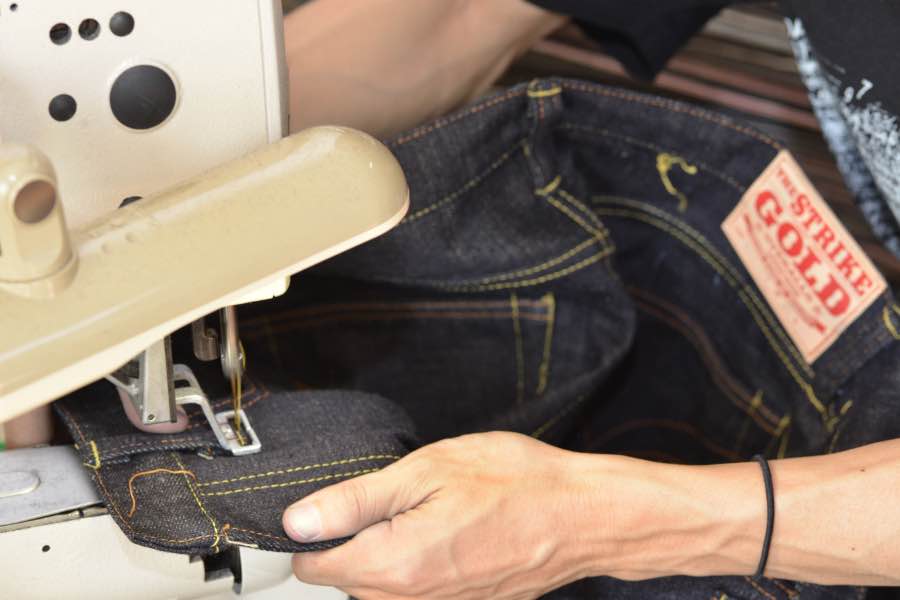
That’s cool.
If you have a look at our catalog now it can give you some idea of what I was after, but…you know, for me the ultimate jeans are the ones that fade and age in the best way. But even the word ‘cool’ has so many meanings, right? And this is no different in the case of jeans fading. There are several different ‘cool’ ways that jeans can fade, so many possibilities, so at first I went to different denim mills trying to find the right fabric. As you know, Okayama is known for this, and yes of course the mills are selling all sorts of amazing denim. But in the end, that denim is really their product, their story. I don’t know the story or feeling behind that roll of denim. It eventually dawned on me that to truly make what I wanted, and to feel that I was genuinely making the best jeans I could, what was in my heart, I would need to start right down at the base level, at the level of the cotton and the thread itself.
Right down to the fibers, eh?
I don’t want to say too much here, but a lot of jeans makers talk about their no-compromise stance on their denim or their jeans, I’m sure you’ve heard that a lot, but… To me, even if you do find good fabric, you can’t just buy that, have it sewn into the shape of jeans and then call it done. That’s not it. You can’t tell yourself you’ve just made the best you can, ones that are going to age perfectly. It takes more than that.
Well, yes, I know that many makers don’t go to the level you’re talking about.
Making jeans that are going to fade and age perfectly is about much more than the denim. The way the jeans are cut, and especially the way they are sewn have a massive effect on how they will age and look when faded. The technique, the way you use the thread when you sew. I started at zero with this and experimented with so many things, like ‘How does this way of sewing affect the denim, the puckering, the fades, etc.’ It took a while to find the best sewing techniques the best machines for what I wanted to achieve. Then there’s the hardware and the details. These too are all part of it. It all has to work as a synergy, so like rusted buttons on brand new pair of jeans look silly, just as nicely faded denim with gleaming, new buttons on them also look totally out of place, so each of the tiny details needs to be considered so it will contribute to the whole.
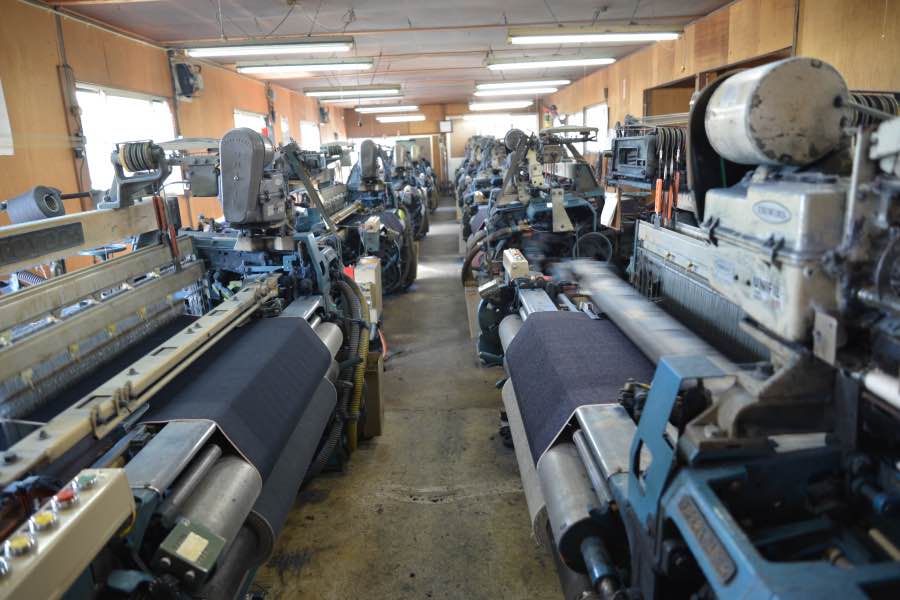
That’s a lot to consider (laughs).
So all of our hardware and attachments had to be made from scratch to be exactly how I wanted.
You mean like different kinds of metals?
Firstly, yes, what types of metals, but also what processes have been done to them, how have they been plated, how do they react with the different materials they may be in contact with, how do they react with and discolor the denim or pocket bags…
My head hurts…haha…
With the rivets, you know there are the male and female parts, right? Like the front you can see and the back that you can’t see…well usually they are made from copper. I make mine out of steel and then just plate them with copper. The big difference between steel and copper rivets is rust. And if we go back far enough, some vintage jeans did have copper-plated steel rivets, but the plating technology was way different back then. I mean like different as in not that great. They rusted fairly easily which is what a lot of people really like about the vintage stuff. But with today’s advanced plating technology the plate doesn’t just wear off like in the old days so it’s not going to look the same at all, even though in both cases they are copper-plated steel. So what I’ve been doing is not plating the back of the rivet, the part you can’t see from the outside. Aside from a thin clear coat I just leave those as they are so they rust fairly soon. This gives that very cool red rust kind of aging halo only on the inside of the white pocket slakes. So I guess what I’m saying is that all these tiny details allow the jeans to age as a whole, not with all the constituent parts aging at different speeds or to different degrees. Again, nicely-faded denim with new, gleaming hardware just isn’t a good look. I just think that if we’re going to go to all the trouble of making the best jeans we can, then…might as well do it right.
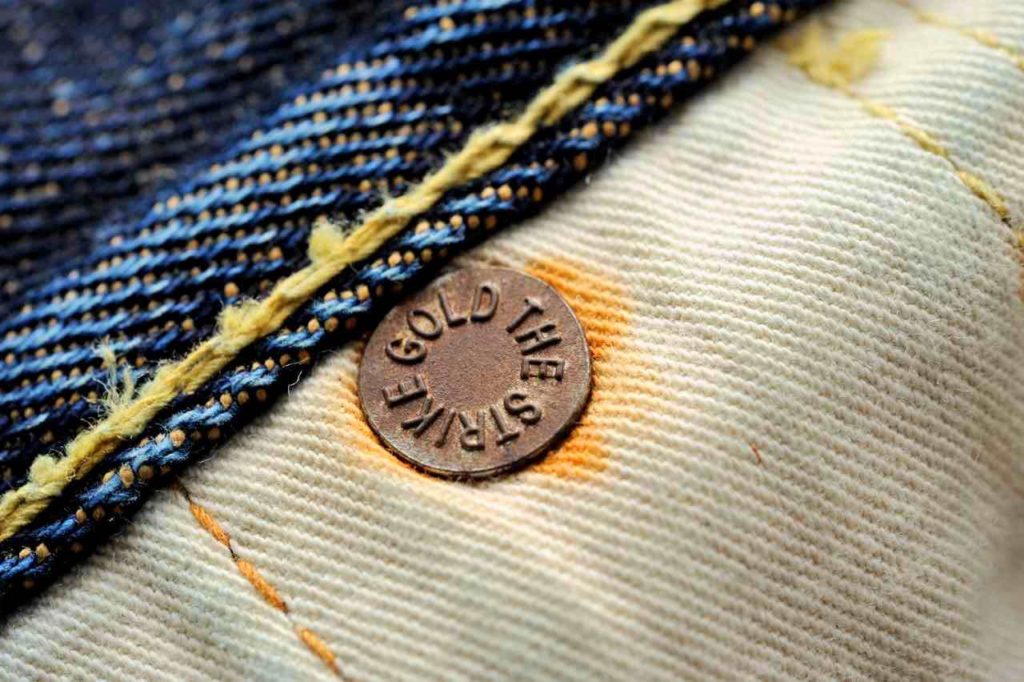
For sure.
So I really respect vintage stuff and I guess this is a way to show that, by making our concept all about aging beautifully. And how I do that is by paying attention to each and every detail and making sure I’m doing the best I can to make my jeans age beautifully as a whole.
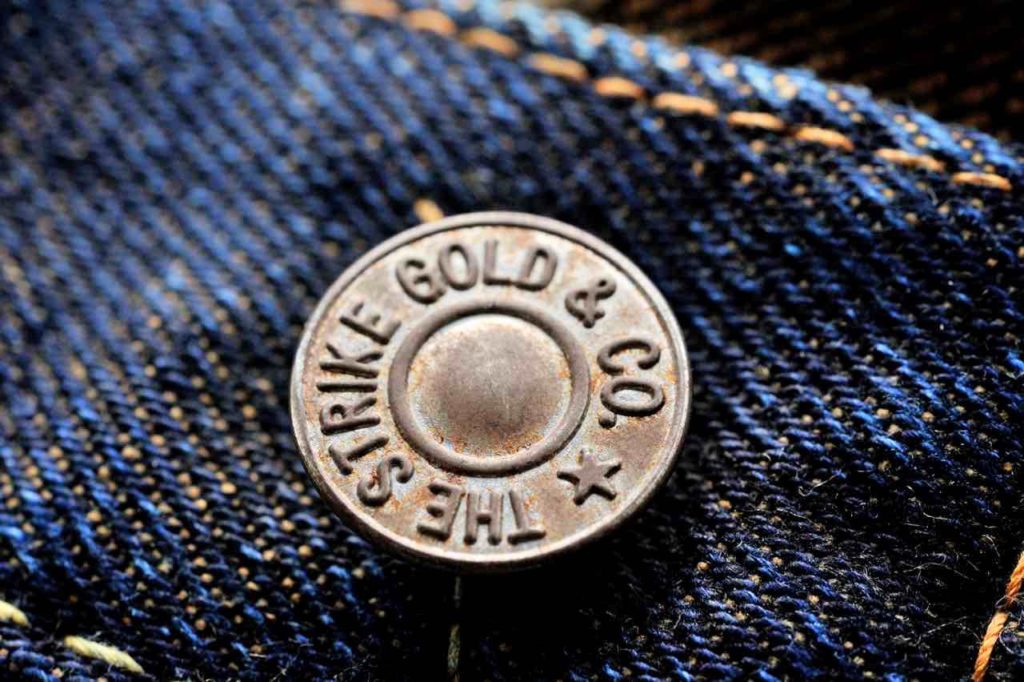
How about the name itself, The Strike Gold?
Well, I’ve never lived in North American myself, and of course I wasn’t personally around at the time of the gold rush (laughs), so I’m kind of just relying on stories I’ve heard from others, but it’s supposed to be like the cry of the miners when they literally struck gold. Like they’re hammering away with their pickaxes and then suddenly you hear the scream, “Strike gold!!” It all came from that, I guess a mix of the whole work wear thing along with the idea of discovering something valuable. The back pocket stitching is also in the same vein; it’s supposed to be two pickaxes coming down, looking to strike it rich.
Was there anything you found tough at the beginning, any setbacks?
Yes, it was hard. Probably the hardest thing was, like I mentioned, I had a strong passion for clothing, especially jeans, and I had a good idea of what I wanted to make, but communicating that clearly to the people doing the sewing was a huge challenge for sure. Now of course we have patterns to work from and they know what I want, but at the start it was hard. If I draw a picture or write some measurements for them, it might not…you know, the world of sewing is a deep one, and they have their own terminology and world of sayings, sometimes ambiguous ways of communicating what they are doing. As an example, I can tell the sewer that I want the pocket opening sewn in this particular way, using this machine, on these exact settings, but there is still a world of personal interpretation that can occur. Within that world we have to say things like, “I want it sewn with bold excitement”, but that’s pretty vague right? Everyone will have a different take on that. So I might get my jeans back and have to be like, “Mmm..okay, but can you do that stitch with a bit more focused flair or excited power” or something similar. But it’s all like that really, the whole production process. Like the thread spinners…it’s all so specialized, each thread having a slightly different twist or level of slub. And with the weaving itself, I can consistently use the same loom with the same thread, but if three different guys are working the loom, I’m going to get three different kinds of denim. Their character literally comes through in the material in each case. To avoid all of that variation, now there are only two guys on two looms that can weave our denim.
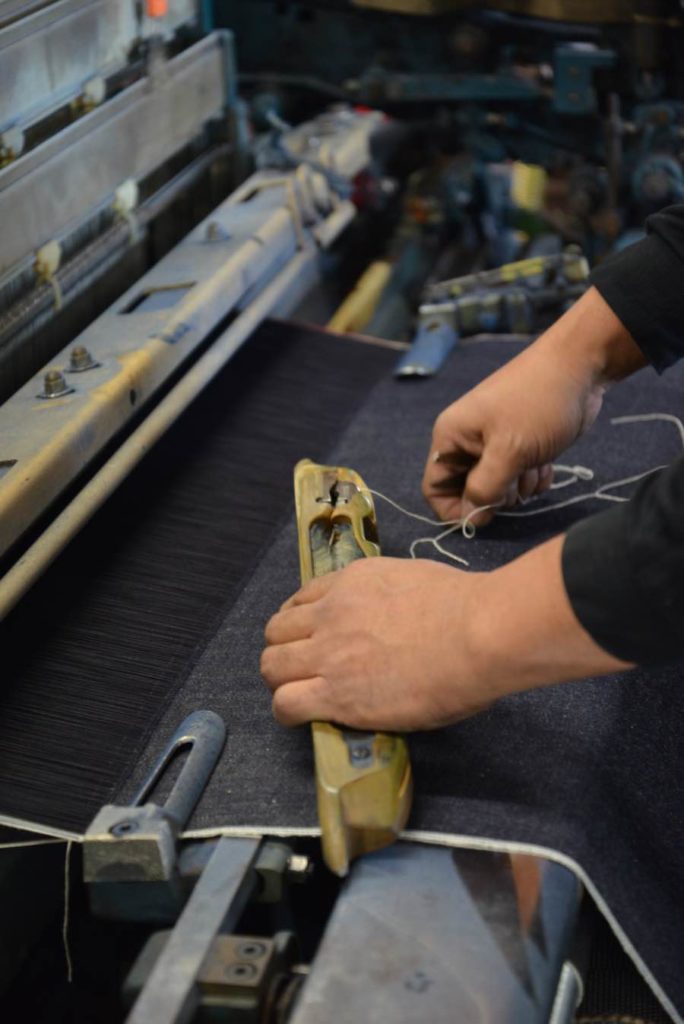
And the name of this mill is secret?
Well, yes. I’m very close to them, and while I do know that they are sometimes interviewed, it’s not really for me to say.
Where is your cotton actually from?
Mostly the U.S., like Texas and a few others. We also use Zimbabwe sometimes and also some Brazilian cotton as a mix-in in certain cases. I consider all of this carefully so it’s not as simple as just saying like, “Well, jeans are originally from the States so that’s the best cotton to use in all cases”. It’s a little more involved than that. I first decide what I want in terms of aging and fading, and then select the best cottons to achieve that goal. We make up our own recipes depending on the aim.
Are you always tweaking your denim or does it stay pretty much the same?
For the core models I have six different denims. But I’ve got something new coming this spring…it’s still in the thread stage though so it’s not quite ready. It takes a while to get right. These past few years I’ve actually been working on a denim that will really pay homage to this area, to our local environment, but it will be a while yet.
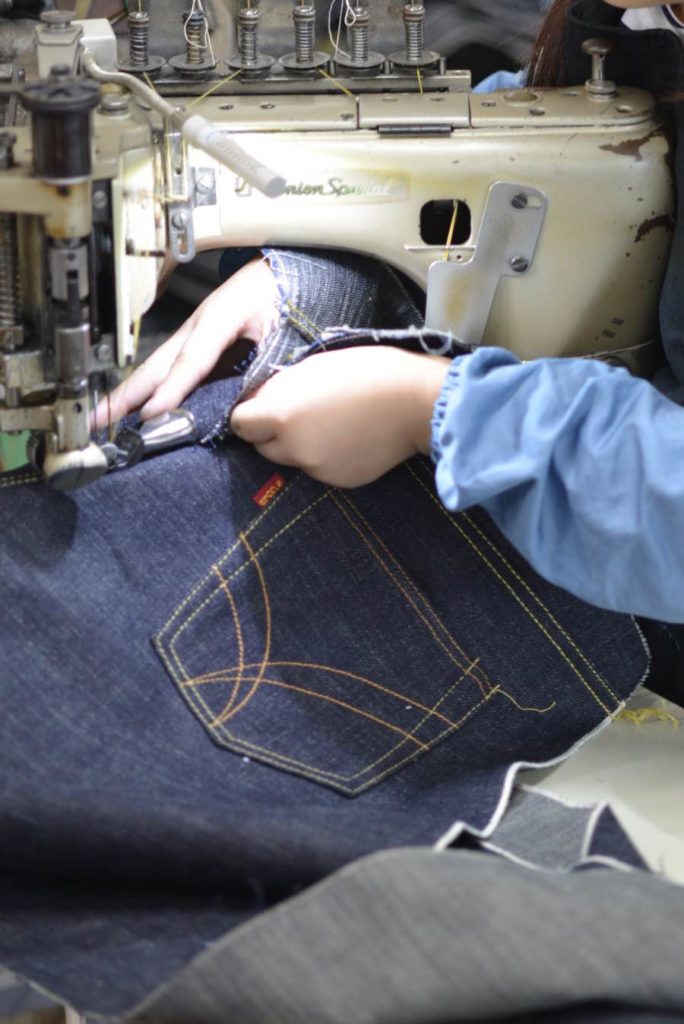
Were you pretty happy with what you were making right from the start?
Not at all. I’m still not satisfied. So many things I could improve or things I want to try. I mean I’ve been satisfied with how certain models have turned out, but overall there is more I want to do. Not yet…not yet.
Is it just the two of you running this whole company, you and your wife?
No, there is one more guy. The guy you might have seen earlier in Tenryo Denim. He runs that shop and also our Instagram account.
Wow, just three people total?
Yes, just us three. But it used to be just the two of us, one in each shop. I guess I also just like to do what I want without having to ask others or listen to people who don’t want me to do something (laughs).
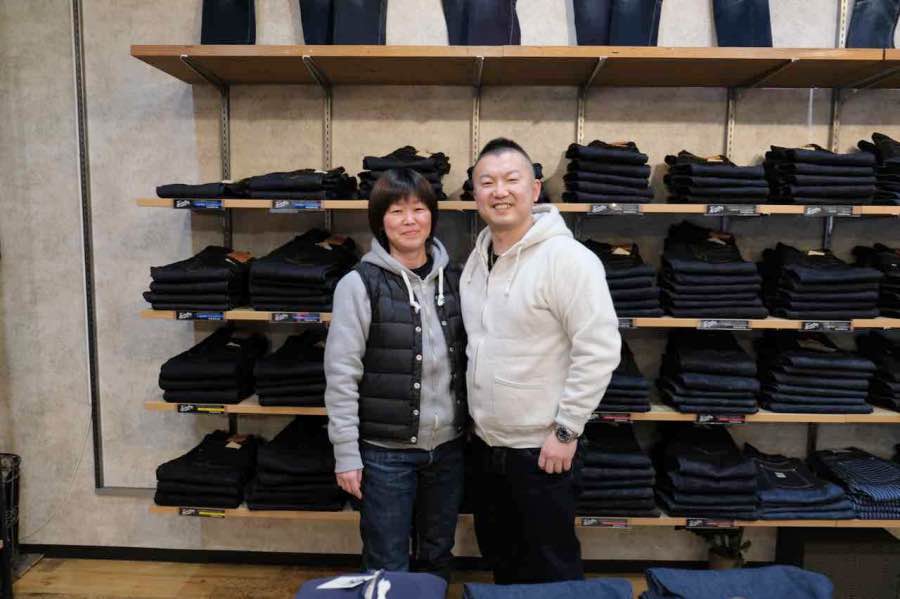
For any new ideas, fabrics, patterns, items…does that all come from you or are you listening to what customers are asking for?
It’s from me.
So you don’t really give in to customers’ requests?
Mmmm, well we certainly do listen to what they have to say, but to be honest, maybe I’m a bit hard-headed. I don’t make it a habit to make things simply because others want me to make it. I started in the first place to make things I wanted to make, so it’s kind of that way now as well. That’s what I want to do. But I of course realize that I can’t only just do exactly what I want to do, so that is also a good thing about Tenryo Denim. It’s through Tenryo that we can go a little crazy, try new things, change it up a bit and listen more to what people are requesting.
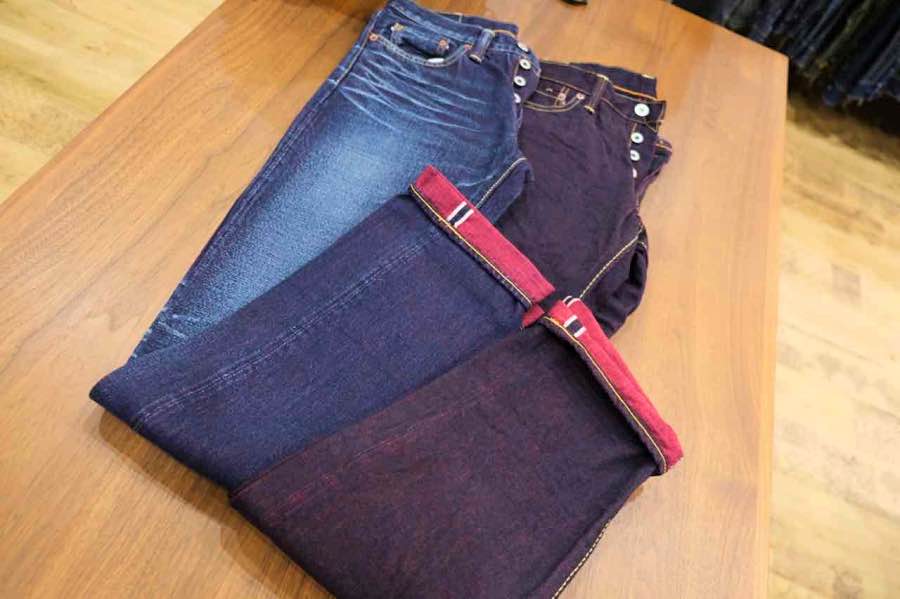
That’s kind of cool you can do that…one part of the company where you can sort of be no-compromise, and then just next door another section where you can experiment with other ideas.
It’s actually really great. It’s through Tenryo Denim that we can answer customers’ wishes, follow fashion trends, things like that.
Are there any other Japanese denim brands that you like or like what they are doing?
I actually don’t really want to get into talking about other brands or ‘competitors’ at the moment, but what I really love are late 1940s and 1950s Levis.
Do you use natural indigo?
At the moment no, we use what is called pure indigo in Japan, but remember that thing that I said I was working on? That’s still at the thread stage of development? Well I really want to use natural indigo, you know like from Tokushima, but I’m kind of torn over what to do, or what I can do. With natural indigo and ‘kasezome’ the thread is dyed all the way to the core so…because we are really about fading and aging, of course rope dying is the best for us. It’s the only way to get the contrast needed. So I’m still working out all of the details on this one, bit of a paradox, like maybe using natural indigo from India with some kind of rope dying process. We’ll see. I’m still right in the middle of working this one out.
Can I write that or is that still kind of a secret?
No, you can totally write that. But honestly, before I even start to seriously consider how I’m going to dye this new thread, I’m still struggling with making the thread itself…(laughs). But I’ll do it for sure, one way or another.
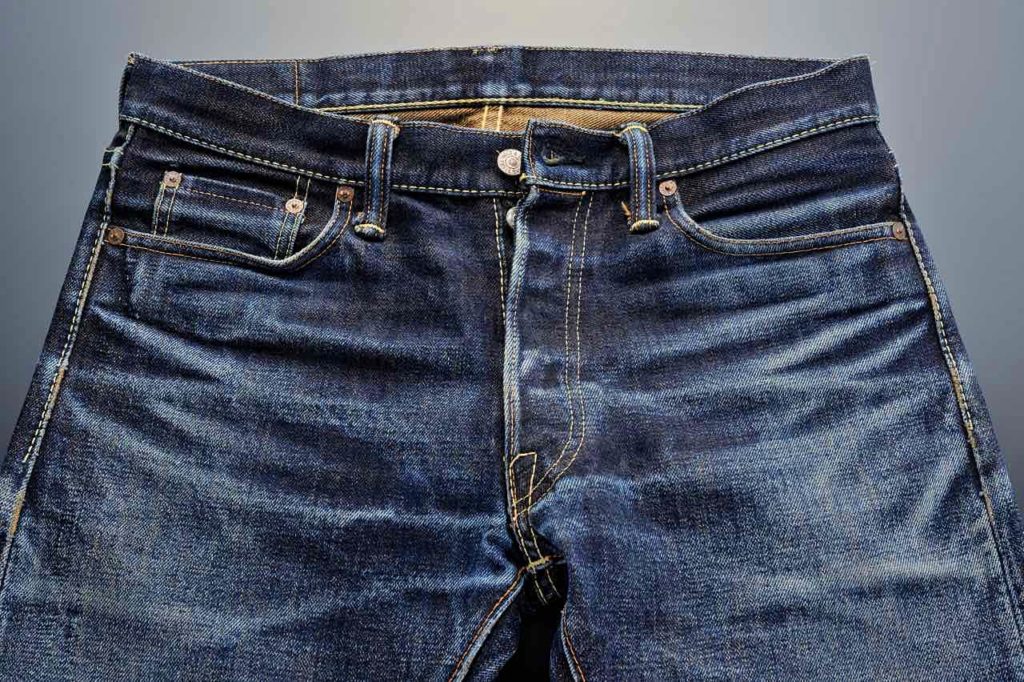
Is Strike Gold sold overseas?
Yes. America…I think a place in Canada too. My wife knows all of this (laughs), I just make the stuff. But in Germany, England, China, Australia, Southeast Asia.
Are most of your sales online?
Not really. I know that we seem to have that image, like we sell a ton online, but that’s actually not the case. 30, maybe 20 percent we sell online. Not that much…we really haven’t really put that much focus into our online store. Ideally, I think that things should be seen directly, felt, tried on…that’s just my idea of sales. Of course I know that now, more than ever, online is really important, but I don’t want to focus too much on the online stuff. That’s just my idea of business I guess.
Has the effect of Covid been quite pronounced for you guys?
Yes.
Like cancelled exhibitions?
We actually don’t do exhibitions. We also don’t do seasonal collections, but yeah, from last spring we have, for example, places that can’t sell things, mostly because of lockdowns. Stock can kind of pile up. We even lost all contact with one of the places that sells our jeans…all sorts of stuff has been happening. So it’s having an effect for sure. And here on Jeans Street numbers are also of course down, especially among people from overseas. But we are doing our best and doing what we can, where we can. It’s tough everywhere.
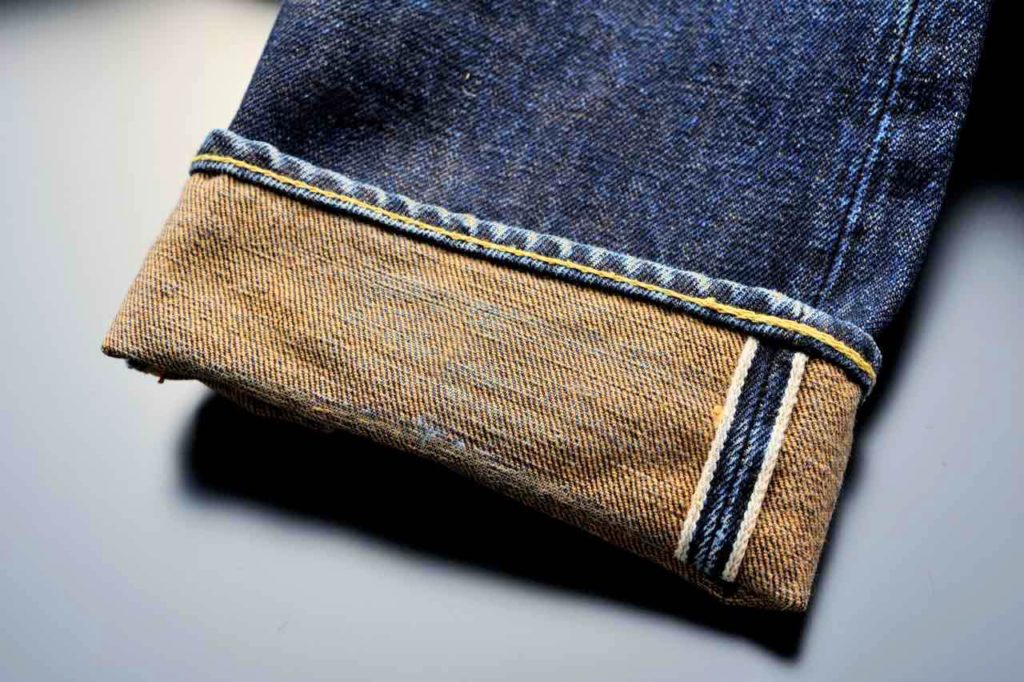
How about the sewing factories and mills? Like the aging workings and such?
I used to be worried about that too, but I think it’s going to be okay. In mills and sewing factories there actually are lots of people in their 50s and 40s working in them now so it’s not all doom and gloom.
How about parts for the looms?
The people in the mills do all their own maintenance, make their own parts. They also have a lot of extra looms out back that they can use for parts. I understand the worry somewhat, but I’m not as concerned as many around me are about that aspect of it.
Things here on Jeans Street seem pretty quiet at the moment, but before Covid, did you have a lot of foreign customers?
Probably about 50% of them were from overseas.
Any general differences between Japanese customers and overseas customers?
Well, it’s just my general impression, but it seems to me like customers from overseas feel really strongly about denim…like really passionate, more so than Japanese customers. They also tend to have a lot of knowledge about jeans and denim. But I guess there are kind of different categories of customers really. Because we are a tourist destination, we get lots of people coming in on tours, just looking, and then there are others who are coming on their own specifically for jeans. But wow, the ones we have coming in here that have seen our website or The Strike Gold catalogs, boy have they ever done their homework! They know a lot about denim.
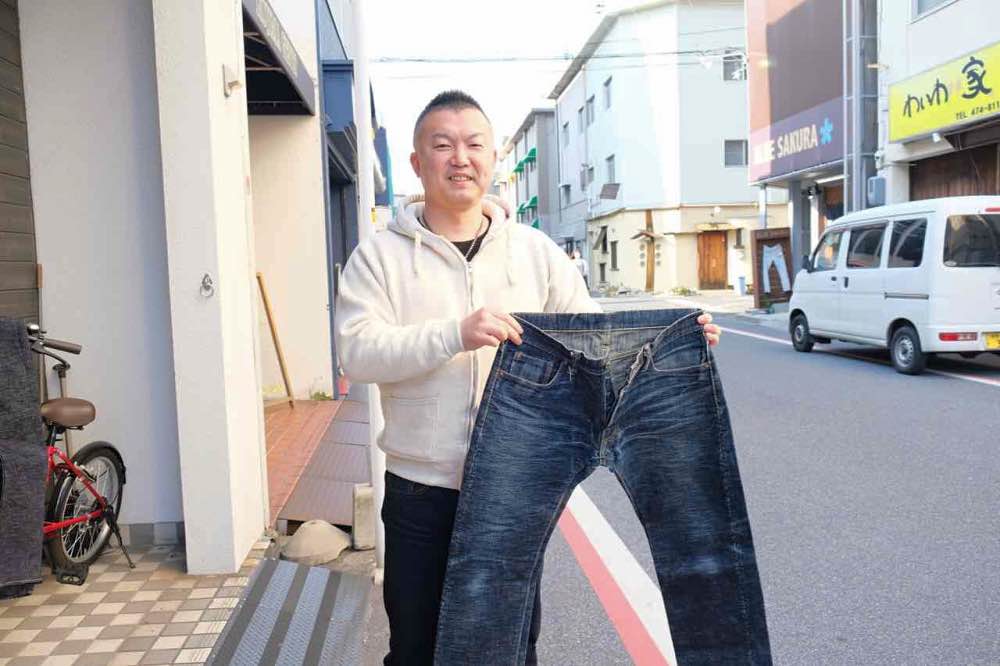
What’s your washing advice to customers?
First and foremost, I feel that you do have to wash your jeans in some capacity. I’m often asked this question and it really depends on your goals. If your only goal is to achieve the highest-contrast fades possible, then of course not washing your jeans is the best way to make that happen. But for those who are in love with the jeans themselves and just want to wear them for as many years as possible, to them I say you need to wash your jeans. Think of it as a kind of maintenance, if you want your jeans to last a long time. But both ways are okay. Depends on what you’re after.
What do you do when people come in and can’t speak any Japanese?
Hahah..I’m hopeless at English, but the other two staff members can speak a bit so I’m lucky there.
What’s the best and worst thing about your job?
They’re actually two sides of the same coin. The best feeling is when the fabric or jeans turns out exactly as you had envisioned. I got into this for the love of it, like my hobby is my job, so it’s not so much about sales as it is about me being able to create exactly what I wanted. Conversely, the worst is when that doesn’t happen. The opposite, like things just don’t turn out how you had hoped. One more tough thing is like the equivalent of writer’s block; there are sometimes periods of stagnation that can come over you where you just can’t come up with any new ideas. Luckily, this doesn’t last too long.
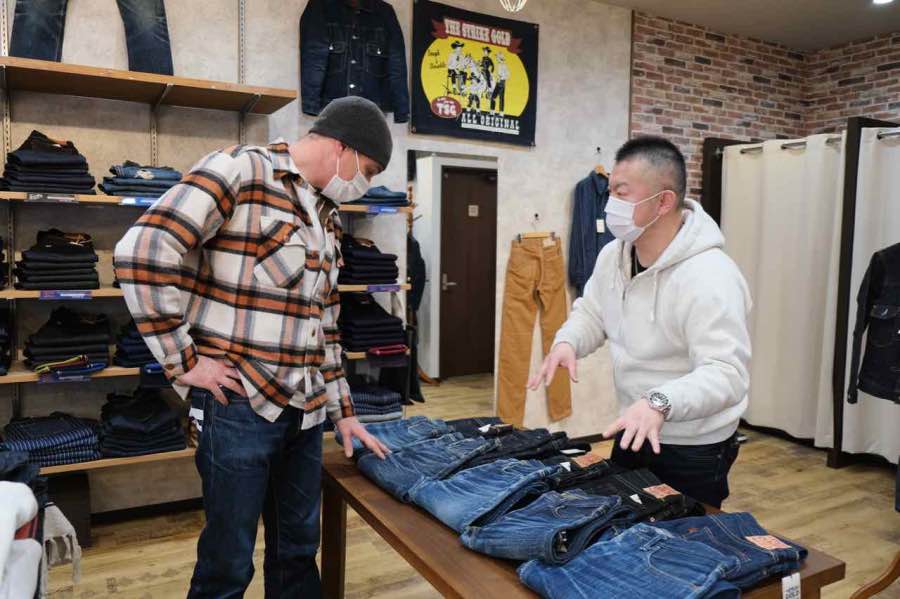
How would you describe yourself?
Haha…well I want to compliment myself of course, but…(laughs)
I’ll make the translation sound good so don’t worry….
(laughs) I really like to focus on one thing at a time, but I also like a lot of information to work with that will help me achieve what I want to. I believe those around me would probably refer to me as a big hassle though (laughs). Totally. I guess I’m kind of detail guy too and I can get deep into whatever I’m doing in the moment, be it collecting things or making jeans. So while I can be kind of single-minded and zone in on one thing, also in a positive way, I like to be informed of what is going on around me, and I do value input and information about what’s happening in the denim or fashion space.
What do you do in your free time?
I haven’t for the past year, but I did karate for 30 years.
Ah I was wondering why you’re built like a tank! I thought it was from handling all that heavy denim…
(laughs) I did Kyokushin full-contact karate for a long time. I’ve done it so much though that I’ve kind of taken a break this past year and have been skipping practice, but it’s something I want to go back to. So that’s one thing. Another one is cars. Not like fast cars, but 4X4s, going into the mountains. For about 5 or 6 years I’ve also fell in love with Rolexes.
I noticed your watch actually. An expensive hobby.
Haha, yeah everyone says that, but not just Rolexes. My wife likes clocks in general. Hamilton, G-shock watches too, though she doesn’t really actually wear them (laughs). But I like Rolex myself.
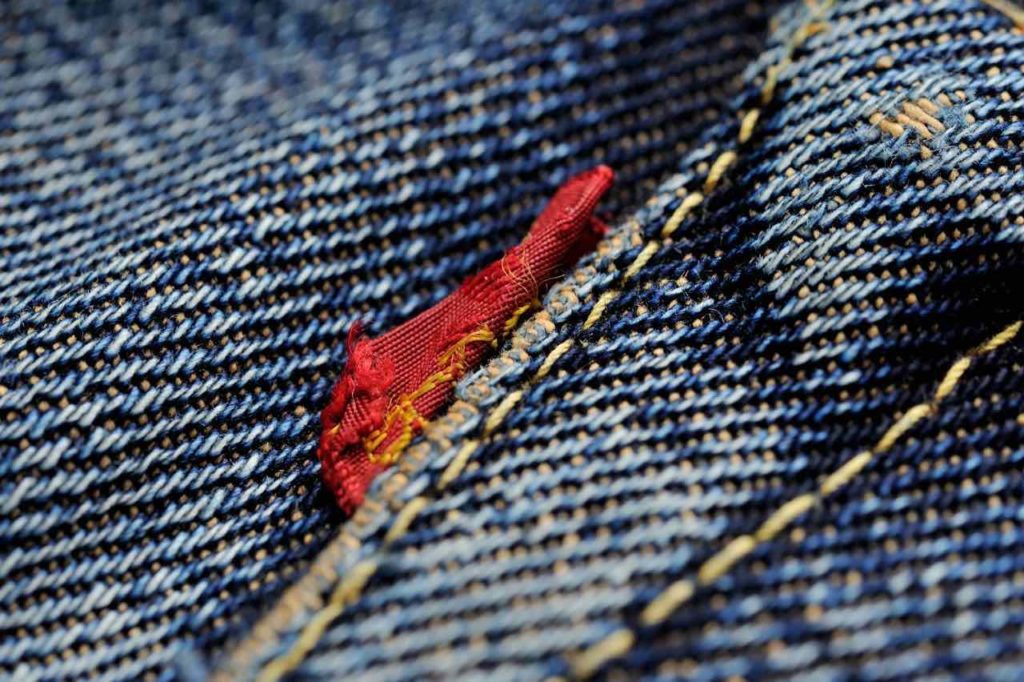
What do you think the future of Jeans Street will be?
(breathes deeply). Firstly, this past year has been tough, of course. Really tough. I didn’t think we’d get into this discussion today, but…well, what do you think? You’ve probably been coming here for years, right? I mean, yes, it is a pretty amazing place to come and check out jeans, for sure. Such a great selection here. But in the end, we are seen as a tourist destination here in Japan. And not everyone who comes here is coming specifically to buy something…I just don’t think the success of the area should be riding simply on being a place where you can buy things. I think having only this going for us puts us in a bit of a weak position really. We need to be more than just that or the future here could be very rough indeed. As I said, if you’ve decided you want to buy good jeans, then yes, there’s no better place, but how about the people who come with them? Is it really that fun? For their kids or their spouses, kind of tagging along? (looks at my girlfriend) It’s not really that fun, right? (we all laugh). I think we need to do more here to make it an experience, not just a bunch of stores hoping that customers will arrive. I think that if some local individuals or companies don’t start recognizing this and taking steps to address it, the place is going to end up being kind of boring, and it will suffer for it.
Are the jeans makers and businesses here working together? I mean is there a sense of cooperation between all you guys or not really?
I think if everyone were cooperating we wouldn’t be in the state we’re in now. If we cooperated, the situation would definitely already be better by now but we haven’t been doing that. But it’s just not a simple matter of concentrating on increasing sales or ways to make more money. We need to start with new experiences or opportunities for education, and then that will have a run on effect, and people will naturally become interested in what we are doing. It’s after that that the customer will buy. I think the era of solely just producing things and selling them has passed. What I mean is that we need to also focus on experiences that are going to move people, reach their hearts, not just sit here and sell things.
So getting people involved in some of the local crafts or methods or production.
Yes, not just, “Hey come and buy this.” I’m like the opposite of “But lots of my jeans” I actually want people to buy less…but something of quality and wear it into the ground. And then repair it and wear it again. I want people people to try that mindset. I’m really not on board with the whole fast fashion thing, no matter how much money it might bring in. You know, like just buying new stuff every single season, trying to find out what will be popular before others…no thanks. ‘Sustainability’ is a word I like. I want to give people that kind of experience, not just a product. I don’t think there is enough of that happening here in Kojima…here on Jeans Street. It’s a bit of a waste. But with this in mind, you know there’s a building on the corner just right down there, you probably walked by it, across from Kamikaze Attack? We just bought that little building last year. I want to make something there, a kind of landmark, something that will symbolize and revitalize the area. Something to do with ‘digital revitalization’ or DX as we say in Japan.
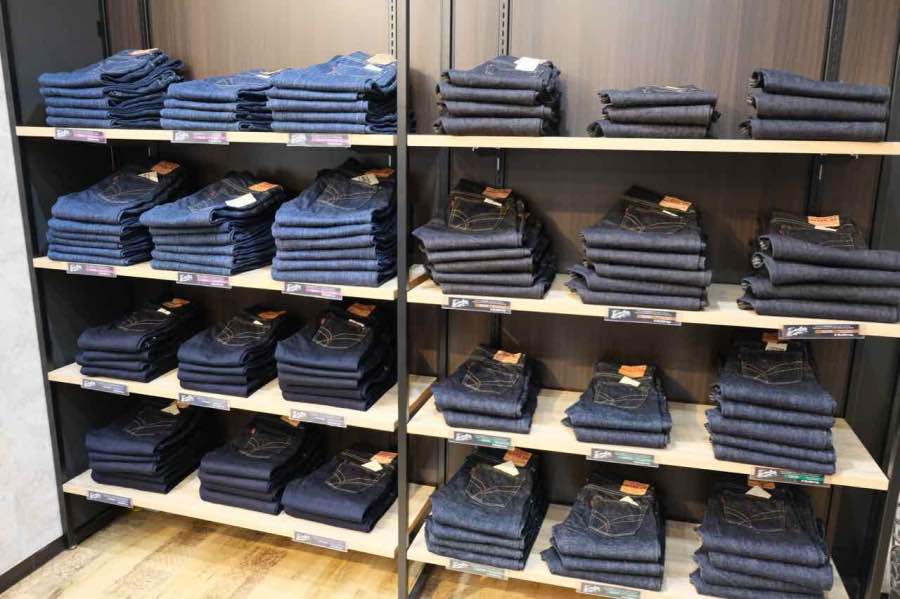
You mean something to do with denim?
Yes, but not limited to that. Including the businesses in Kojima as a whole…but of course denim will be included. In fact I’m meeting with somebody tomorrow about marketing, but it’s early days. We’ll gauge interest and input from Kurashiki city, Okayama itself. We’ll see where it can go. I want whatever it is to attract people to the area while also letting the world know about Okayama’s jeans. I don’t know if it’ll get to this level, but it would be awesome if people from overseas, when planning a trip to Japan, would mark Kojima out as one of the places they really want to see while they’re here. That would really be great.
Do you do your own repairs here?
Generally, we would just collect the jeans here and have them repaired at our factory, but it really depends on the nature of the repair.
Do you charge for small repairs?
Again, it’s really case-by-case. But yes, if it’s something small or just hemming, of course we’re like, “Yeah, just hand ‘em over” and we don’t take any money for stuff like that. But if something is truly ripped, then yes, we have to charge for those kind of repairs.
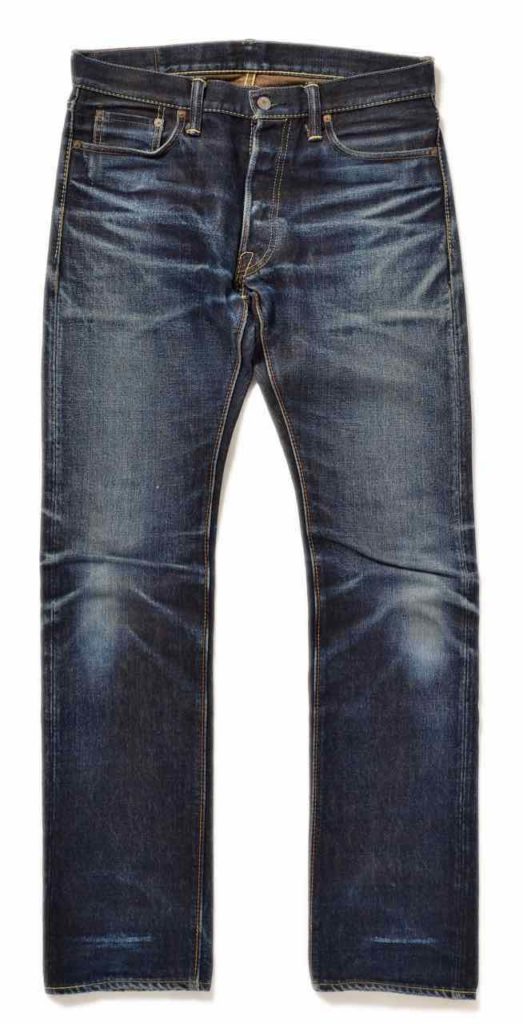
Do you wear jeans every day, all year?
Yes. The summer is brutal but…hey, I make and sell jeans! To be honest it can be pretty rough in the height of summer, but I’m worried that if I went and switched over to shorts I’d probably never come back to jeans (laughs). I endure it…somehow. And I don’t make any summer weight denim either so…(laughs). But look at the bright side – you get the most amazing fades in all that heat and humidity!
What’s great about Okayama?
Hmmm…nothing. (laughs) Just kidding. Of course fruit, great old clothing, Kurashiki is gorgeous, jeans. Also the Seto Ohashi bridges. They’re pretty impressive.
Oh yeah, they connect Okayama to Tokushima, right?
Kagawa.
Oh yeah, Kagawa! (laughs)
They’re pretty impressive actually. But really, there’s a ton of stuff here.
(A bunch of fun but unconnected martial arts talk here)
Any final messages to The Strike Gold fans out there?
Oh yikes, I wish you would have warned me sooner (laughs).
Well, maybe something about yourself. To be honest, The Strike Gold is a bit of a mystery to most denim fans out there. I mean we know your jeans but I didn’t know who you were until I walked in here a few months ago and met you. People who know Iron Heart know Haraki-san’s face, people who know Full Count know Miki-san’s face…but not many people know about Hamamoto-san…
Ah, yeah I get it. Concerning The Strike Gold, I’m not really planning to make anything radically different from what I’m doing now so I hope nobody is expecting that. I’ll leave Tenryo Denim out of it at the moment just to keep it simple, but I’m not going to start following trends or something like that. I mean I do want to hear customers’ voices, but I also see it as a strength to keep making what you love. But I do want to make items that will fit in with your life and I do want to keep looking for ways to have the jeans age even more beautifully, including all parts of the jeans, hardware too. What exactly makes a pair of jeans the best pair of jeans? I suppose it’s a bit different for everyone, but for me it’s like this. You buy a brand new pair of jeans and put them on, all stiff and rough, not knowing how they are going to turn out. You wear them for years, through all the ups-and-downs of life, through your work and your play, and they become a literal record of your life. Also of your body and even little idiosyncrasies in the way you walk. And these become faded and eventually ripped, in a way unique to you. And your wife and your kids and even your grandmother tell you to smarten up and buy some new jeans already. But you just keep wearing them because they are a part of you, until things get SO bad that you finally cave and buy a new pair. But even THEN…even then, after you’ve been pressured into buying a new pair, you still go and put on your old pair. Dang! Now those are dream jeans for me. The ultimate. So I want to make jeans that will become THOSE jeans.
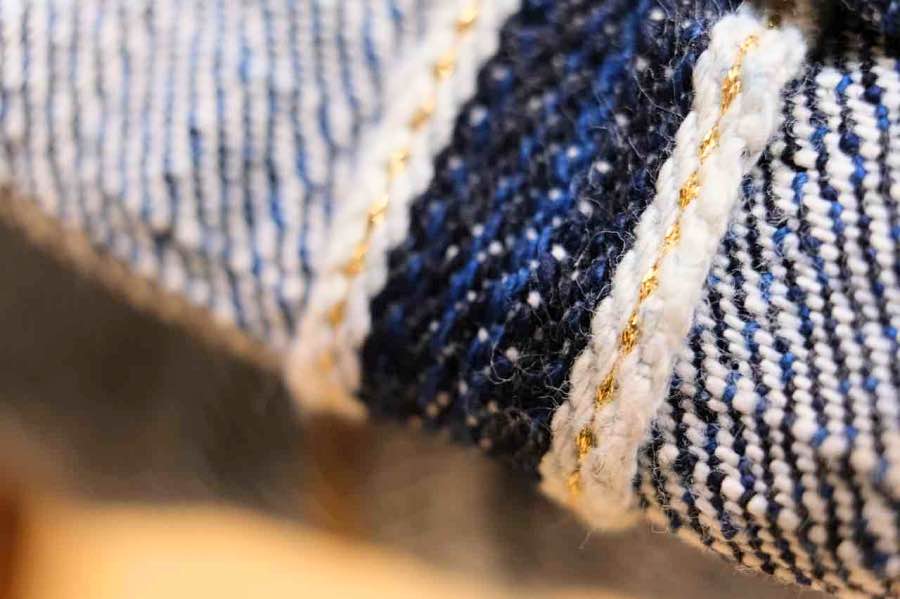
Sounds pretty awesome.
So we are not going to change. I just want to move forward quietly and make what I like as well as I can…and hope you will like them too. Like I said, I don’t really want to tell somebody, any one person, to buy a lot of my jeans. They shouldn’t have to. I mean yeah, in a business sense, sure that’s nice, but I’d rather see them in one pair that will last years and years and become an item of love, a record of their one unique life. That’s what does it for me so…I won’t change. And besides, I’ve got Tenryo Denim for that (laughs), you know, we can follow trends and requests from there. I know I probably look stubborn or overly proud from the outside, but The Strike Gold has been my baby from the start, the one thing I can control completely and do what I want to do, so…that’s what I’m gonna do. If it works out that nobody buys them, well, that’s okay too (laughs), it just means I’ve made something that wasn’t a hit with people. Sometimes that can’t be helped. And that’s okay.
And so ended an amazing afternoon of denim talk with the founder of The Strike Gold, Tohru Hamamoto. It was fascinating, educational, and a lot of fun. If you are into denim with amazing texture and incredible attention to aging detail, and also like to support smaller, family-run businesses, The Strike Gold is certainly worth a look.
Klax-On homepage here.
Thank you also to Hamamoto-san for supplying many of the photos used in this article.

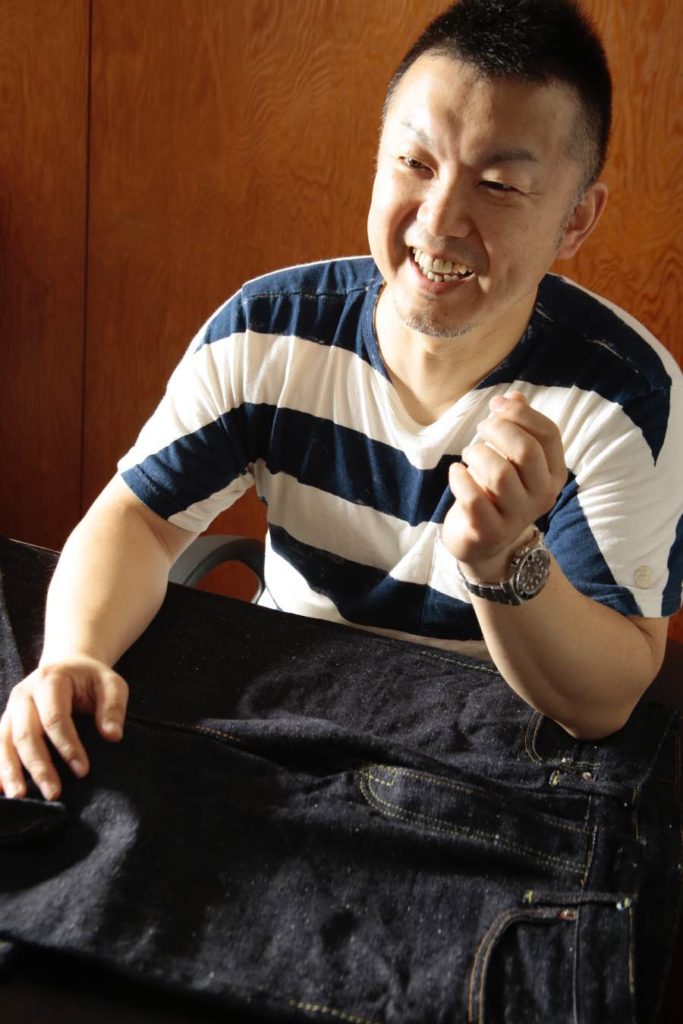
Pingback: Ending The Retail Apocalypse - The Weekly Rundown
fantasic !!!
I love what The Strike Gold does, even though they’ve been on my to buy list for a while. I have to sell some pairs before I can justify buying another pair but they will be my next. And reading this makes me happier to support them. To read his ideas about wanting to turn Jeans Street into a destination for the whole family was great. I hope others join in on his idea to make Kojima better for the family rather than the one person who loves jeans in the family. Really looking forward to buying my 5009s now.
I’ve really enjoyed reading the great man’s philosophy. I am honoured that my first pair of raw selvedge denim jeans are The Strike Gold 2109. They will be worn out with pride.